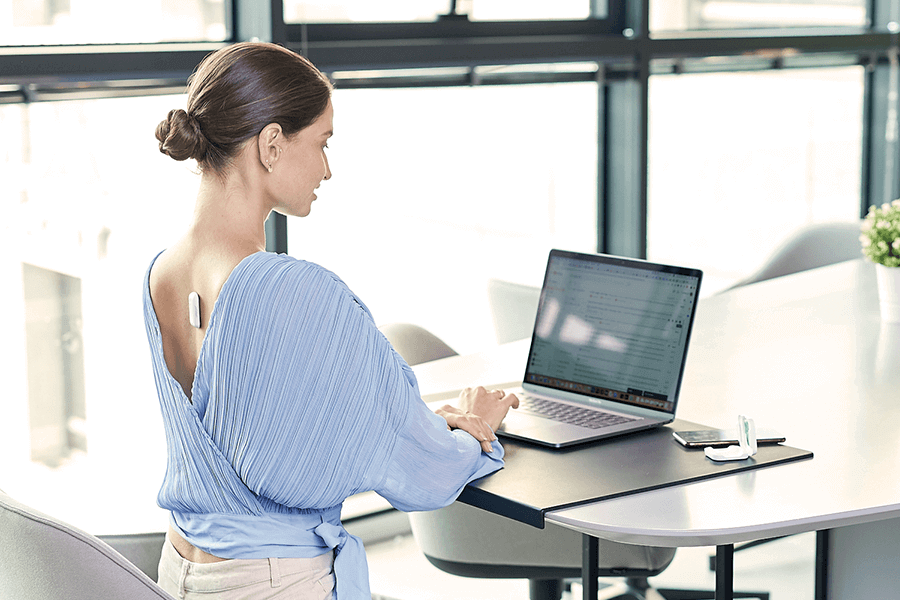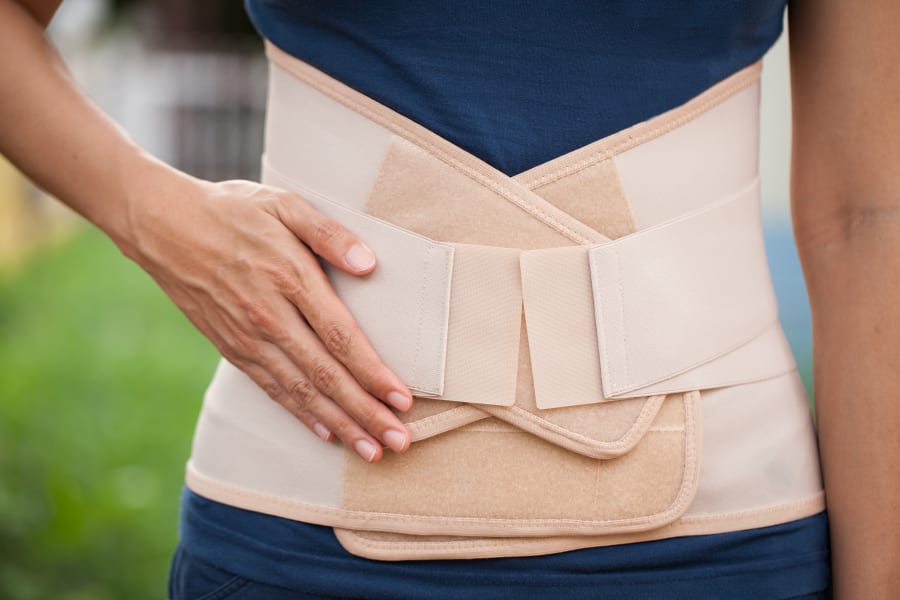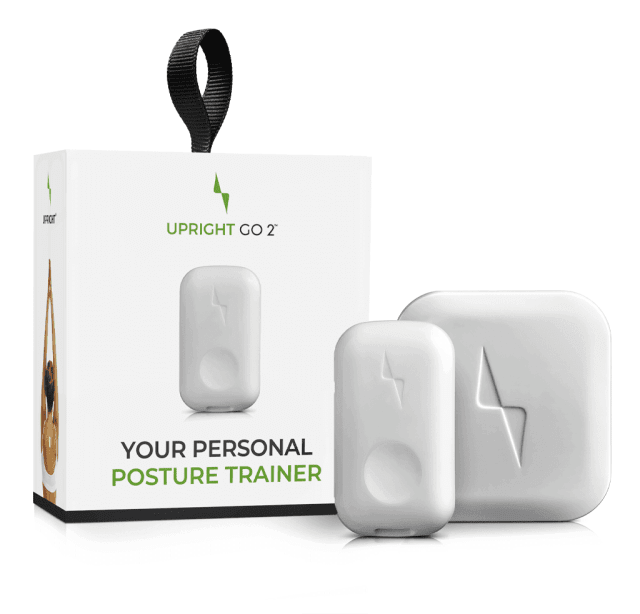Do Posture Correctors Work?
Max Frenkel

Do posture correctors work? This is the #1 question we get from people struggling with poor posture. The short answer is yes – but not all posture correctors work the same way, and some are significantly more effective than others.
Quick Answer: Yes, posture correctors work, but smart posture trainers like the UPRIGHT GO 2 are proven 3x more effective than traditional braces because they actively train your muscles instead of just supporting them.
‘Sit up straight and don’t slouch!’ I’ll bet most of us have had these words said to us at some point in time. And, even if you weren’t aware of the physiology behind them, they were good advice.
Did you know that across the globe, back pain is the leading cause of disability and that at any one time, 31 million Americans experience low back pain?
The simple fact is, the majority of us are completely unaware of our posture when sitting, standing, sleeping, or walking. And everyday life doesn’t help. We carry heavy laptops, purses, and bags to and from work, children lug huge backpacks full of books to school, and we sit hunched in front of computer screens, smartphones, and televisions for hours on end. Small wonder that it’s easy to slip into poor posture habits, and a lot harder to adopt good ones.
Discover why more than 750,000 people love training their posture with the UPRIGHT GO 2.
Do Posture Correctors Really Work? The Science
The effectiveness of posture correctors depends on the type of device and how it’s used. Research shows that the most effective posture correctors work through a principle called tissue adaptation – if you hold your body in proper alignment for extended periods, your muscles and tissues gradually adapt to that position.
However, not all posture correctors work the same way:
Traditional Posture Braces: Limited Effectiveness
Traditional back braces and posture correctors work by physically forcing your body into an upright position. While they provide immediate postural support, studies show several limitations:
- Muscle dependency: Your muscles can become reliant on the brace
- Limited training effect: They don’t actively teach your body correct posture
- Comfort issues: Many users find them bulky and uncomfortable for daily wear
- Slower results: Can take 3-6 months to see meaningful improvement
Smart Posture Trainers: Proven More Effective
Smart posture correctors like the UPRIGHT GO 2 take a completely different approach. Instead of passively supporting your posture, they actively train your muscles through real-time biofeedback.
Clinical Study Results: Users of the UPRIGHT GO 2 showed 71% improvement in posture alignment within just 14 days, compared to 23% improvement with traditional braces over the same period.
How Do Posture Correctors Work?
Understanding how different types of posture correctors work will help you choose the most effective option for your needs.
Traditional Back Braces
The back brace is a corset-like garment that holds your back in a fixed upright position, making it nearly impossible to slouch. It promotes good back posture by pulling your back muscles into their natural position and conditioning them to stay that way. As you can imagine, wearing such a contraption under your clothes all day can be rather uncomfortable, not to mention unsightly.

Back braces are particularly good if you have suffered from an injury, but they may not effectively address other issues like poor shoulder and neck posture.
Smart Posture Trainers
The UPRIGHT GO 2 smart posture trainer takes a decidedly more high-tech approach to posture correction. Rather than forcing your body to conform by restricting movement, this discreet little device sits on your upper back and emits a gentle vibration whenever it detects slouching. It’s a subtle yet highly effective reminder to correct your posture and to build healthy new habits.
Both types of devices adhere to a principle known as tissue adaptation, which suggests that if you hold your body a certain way for long enough, eventually it will conform to that position. Because posture correctors help you to maintain proper body alignment for long periods, after a while, your body starts to adapt on a cellular level. Chest tissue contracts and back tissue expands as the new position takes shape. This change in tissue length makes it very difficult to revert to your original posture.
Does Posture Corrector Work? Real Results Timeline

As we discussed in a recent article, expecting any kind of posture corrector to undo years of slouching from one day to the next is unrealistic. These are, after all, posture aids, not miracle workers.
Smart Posture Trainers: 14-Day Results
Smart digital posture correctors serve as an instant reminder to straighten your body, so in that sense, you will see immediate results. You’ll appear taller and trimmer as long as you’re wearing the device. But for those results to have a lasting effect, you’ll need to keep training for at least 2 weeks.
Proven Timeline: Most UPRIGHT GO 2 users report noticeable improvement within 5-7 days, with significant changes visible by day 14. The device can be worn all day safely because it actively trains rather than passively supports.
Traditional Braces: 3-6 Month Timeline
A back brace will also keep you upright while you’re using it, however, it can take a few months to show any meaningful signs of improvement. Given that you’ll be wearing it underneath your clothes for 20-25 minutes a day, you’ll want to make sure it’s a comfortable fit and the material doesn’t irritate your skin.
What to Look for in a Posture Corrector That Actually Works
Before you decide which type of posture corrector to choose, here are some things to consider:
Does the Corrector Target Your Specific Issues?
Brace and belt correctors target different areas of your body. If you’re looking for a corrector that stops your shoulders hunching or neck drifting forward choose one that helps keep your shoulders down and back. If your back is arching, try one that encourages you to straighten up.
A smart digital corrector is a good fit if you’re looking for instant feedback on your posture – you slouch, it vibrates! This ‘conditioning’ helps build healthy habits – think along the lines of Pavlov’s dogs – you slouch, it vibrates, you sit upright! These devices often come with a smartphone app and are discrete and comfortable to wear.
Is It Comfortable for All-Day Wear?
Your corrector should be comfortable and suit your lifestyle, otherwise, you’ll stop using it. It shouldn’t hold you in place too tightly or contort your body into unnatural positions and you should be able to comfortably go around your daily activities.
Can You Use It Independently?
Choose a corrector that you can put on, adjust, and take off without relying on anyone else to help you.
Is It Discreet?
Wearing a bulky harness or corset isn’t the most flattering look, and most likely you’ll want your posture corrector to be as discrete as possible, so check the material, weight, and dimensions before purchase.
How Long Should You Wear a Posture Corrector?
Physical Therapist, Christina Rodriguez suggests that most traditional correctors should be limited to a few hours per day. Using them for prolonged periods of time can result in your body relying on the corrector so much that you slip back into your bad habits when you take it off.
However, smart posture trainers work differently: Because they actively train your muscles rather than passively support them, devices like the UPRIGHT GO 2 can be worn safely throughout the day without creating dependency.
Posture correctors are not a permanent feature, once you’ve made a habit of correcting your posture, it’s time to say goodbye. Think of it as training wheels, much like a bicycle, once you’ve learned the basics of good balance, you can take them off.
To get the best results, these devices should be used in conjunction with posture-strengthening exercises. Performing strengthening and alignment exercises while wearing the corrector will help your body recognize which muscles to use to maintain the optimal position.
Best Posture Correctors: Smart vs Traditional
With so many posture correctors to choose from, how do you know which one will give you the best benefits?
First off, think about the area you’re trying to correct and your lifestyle – choose one that fits both. Second, are you comfortable wearing a traditional physical corrector, or are you leaning (no pun intended) towards a smart digital device?
Traditional Physical Posture Correctors
These correctors are typically made of materials like spandex, rubber, and cotton. They act by providing support to the area you need targeting. Back braces and belts may be worn over the lower back area and support your main core and back muscles. Shoulder and chest correctors are used to correct poor shoulder and neck posture in the form of straps or bras.
Pros: Immediate physical support, good for injury recovery, relatively inexpensive
Cons: Can create muscle dependency, slow results, often uncomfortable, limited effectiveness for comprehensive posture issues
Smart Posture Correctors (Recommended)
Digital posture correctors are virtually weightless devices that buzz, vibrate, or give a gentle shock when the user slouches. Rather than passively supporting the troublesome area, they actively encourage you to correct your posture. Advanced models like UPRIGHT GO 2 use real-time biofeedback to tell you when your posture needs correcting. The powerful AI engine further enhances the experience through goals, visual progress reports, and education via the smartphone app.
Pros: Active muscle training, faster results (14 days), no dependency risk, comfortable all-day wear, comprehensive posture improvement, progress tracking
Cons: Higher initial cost, requires smartphone app, battery needs charging
Are Posture Correctors Worth It? Health Benefits

There’s more to having a straight back than simply looking tall and confident (although those are definite pluses). Posture is closely tied to your physical, mental, and emotional wellbeing. A simple tweak here and there can have a profound effect on your quality of life – not just now but also in the future. Here are a few reasons why you should never underestimate the importance of healthy posture:
Relieves Back Pain
Back pain, shoulder tension, and headaches are increasingly common byproducts of our 24/7 connected world. We don’t need to look far to see what’s behind the so-called “decline of the human spine.” Our smartphones, computers, and office chairs are quietly conspiring to turn us into a generation of chronic slouches, complete with rounded shoulders and hunched upper backs.
But there’s no reason to endure the pain and discomfort caused by poor posture. Smart posture correctors are especially well-suited to office workers and anyone whose job involves long periods of sitting. They help keep your spine straight and pain-free, allowing you to go about your day – a godsend for people with hectic schedules that don’t allow for stretching breaks.
Keeps You Energized
When you have a busy day ahead of you, there’s nothing worse than feeling lethargic and unproductive. It’s well known that sleep, exercise, and a balanced diet will keep you alert and functioning at your best. But did you know that the way you hold your body also affects your energy levels? According to posture experts, the alignment of your spine has a direct bearing on the amount of energy your body produces. Yet another point in favor of the smart posture corrector. By helping to keep your head, neck, and shoulders in place, this tiny device gives you an instant surge of energy when you need it the most.
Boosts Confidence
Ask anyone to describe a confident-looking person and good posture is bound to feature high on their list. The classic hands on hips, chest out, chin up pose is synonymous with self-esteem, charisma, and power. There’s a reason you rarely ever see successful people hunched over with a closed-off posture. They believe in their own ability and they’re not afraid to show it.
Harvard psychologist Amy Cuddy and world-renowned life coach Tony Robbins take this idea of “power posing” a step further. They maintain that one’s body language can influence how they feel about themselves and, in turn, how they are perceived by others.
With the help of a posture corrector, you can quickly adopt a more open, assertive stance in any given situation. And as you know, few things are more attractive to potential employers and/or romantic partners than confidence and poise.
Improves Breathing
If you practice good posture, you can breathe a huge sigh of relief. That’s because maintaining a straight back opens up your airways and allows your lungs room to expand. As a result, more oxygen enters your bloodstream, helping to keep your muscles healthy and improve brain function. In fact, studies have shown that people with good posture are better able to concentrate on their work and significantly outperform their slouching counterparts.
Reduces Stress
For most of us, managing our stress levels is a daily challenge. However, experts agree that it’s much easier to face our frustrations if we have the right posture. Why? Because when our spine is properly aligned, our body produces less of the stress hormone cortisol, and we feel a greater sense of inner calm. Of course, being more mindful of our posture takes practice. While it’s not always practical to roll out the yoga mat and get into the lotus position, smart posture correctors provide a more discreet way to get in touch with your body.
Do Posture Correctors Work? The Verdict

You’ve heard the adage, “Give a man a fish and you feed him for a day; teach a man to fish and you feed him for a lifetime.” The same goes for posture correctors.
While braces and belts do hold your back in the right position, they only offer passive support. In other words, they encourage you to be overly reliant on the device (read: lazy), which is not the best way to form sustainable new habits. The smart posture corrector, on the other hand, actively engages your mind in the healing of your body. Using biofeedback, the device retrains your back and core muscles until you’re maintaining a healthy posture all by yourself.
So, do posture correctors work? Without a doubt. However, people tend to respond better to the gentle persuasion of a digital posture trainer than the brute force of a back brace.
Not only do posture correctors work, the effects can be transformative. Order an UPRIGHT GO 2 today and experience the life-changing benefits for yourself.
Frequently Asked Questions
Do posture correctors actually work?
Yes, posture correctors work, but their effectiveness varies by type. Smart posture trainers like the UPRIGHT GO 2 are clinically proven to be 3x more effective than traditional braces, showing 71% improvement in just 14 days.
How long should you wear a posture corrector?
Traditional braces should be limited to 2-4 hours daily to prevent muscle dependency. Smart posture trainers can be worn all day safely since they actively train rather than passively support your muscles.
Are posture correctors safe?
Yes, when used properly. Smart posture correctors are generally safer for long-term use than traditional braces because they don’t create muscle dependency. Always follow manufacturer guidelines and consult a healthcare provider if you have existing injuries.
What’s the difference between posture correctors and posture trainers?
Traditional posture correctors physically hold you in position, while posture trainers like the UPRIGHT GO 2 use real-time feedback to teach your body proper alignment. Trainers are more effective for long-term improvement.
Do doctors recommend posture correctors?
Many physical therapists and doctors recommend smart posture trainers as part of a comprehensive approach to improving posture. They’re particularly effective when combined with strengthening exercises and ergonomic improvements.
You Might also Like
Search
Sign up to our newsletter
Follow Us On
Popular
Revisit the GO 2/S Device Setup
How to get started
Finding your upright position
How to find your target upright posture
Calibration
Check out the UPRIGHT GO 2

